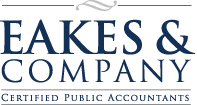COVID-19 BUSINESS OPENING TOOLS
COVID-19 Business Opening Tools
As businesses prepare to open their doors and employees begin returning to work, stopping the spread of COVID-19 and employee safety remains top priority.
Each state is developing and implementing reopening guidelines. These guidelines will differ from one state to another; and in some cases, guidelines will be unique to their business sector. As we navigate these unprecedented times, many employees fear the risks involved in returning to their workplace and businesses will need to make plans to mitigate these risks. Communication, signage and updated procedures help mitigate these risks and fears.
Federal Guidance
President Trump unveiled Guidelines for Opening Up America Again, a three-phased approach based on the advice of public health experts. These guidelines outline a data driven approach for each region and state. The overarching plans are designed to be phased in, an approach that encourages a gradual re-opening to mitigate risk and continue to protect the most vulnerable.
Federal Guidance to Employers
Develop and implement appropriate policies in accordance with Federal, State, and local regulations and guidance, and informed by industry best practices, regarding:
Social distancing and protective equipment
Temperature checks
Sanitation
Use and disinfection of common and high-traffic areas
Business travel
Monitor workforce for indicative symptoms. Do not allow symptomatic people to physically return to work until cleared by a medical provider
Develop and implement policies and procedures for workforce contact tracing following employee COVID+ test.
Some states are planning to reopen with a certain percentage of employees returning to maintain social distancing.
Additional requirements apply depending on the current phase of reopening.
Signage To Post
As many businesses reopen, there are new tools created to help communicate CDC guidance and Federal Families First Coronavirus Response Act notifications. As a business operating in the new reality, make sure you are familiar with additional leave available due to COVID-19. Many experts are predicting a second wave, this summer or in the fall, and businesses are planning for that possibility as well. Understanding the new and changing laws will be a critical factor for employers.
Additional recommended signage:
Accommodating Employees
The Department of Labor maintains that an employer has certain obligations to keep employees safe in the work-place. With directives to employees to stay home if they’re feeling sick, and new laws to provide paid leave to these employees, here are some accommodations to review:
Many working parents may face the obstacle of not having the option of returning to work as their children continue to be at home. Some states are limiting daycare to first responders only, making it harder for working parents to return to work in an office.
Remote working is recommended for positions that can be done from home. Many jobs are evolving to be at home permanently as the COVID-19 epidemic has proven that this model can work. Twitter, for example, has extended work from home permanently for its employees. For companies seeking this balance for work from home our eViewer System is a solution which helps employers remain compliant with mandatory labor postings.
Families may stagger available leave so that one takes leave at a time allowing ability to take care of family or children at home longer. Keep in mind, that when schools start again, there may be localized quarenteens for isolated schools within a district. This unexpected situation will need to be met with accommodation and understanding.
Many workers have extra risks such as being older, diabetes or heart disease. NCDHHS data shows that 75% of Coronavirus deaths had at least 1 underlying health condition. For high risk employees, work from home alternatives, or isolation in the office will help limit the exposure.
Cleaning & Stopping The Spread
To help limit the potential exposure to COVID-19 it’s recommended to practice social distancing, wear face masks, wash hands often and maintain a clean working environment. Post signs to reinforce and remind your employees of all recommended safety procedures.
Some employers have installed enhanced filtration systems as well as ultraviolet light systems to reduce germs, while some are exploring the help of automated cleaning robots. These systems are in addition to the standard cleaning schedule of up to every 30 minutes. Keeping your workplace sterilized is even more important if your employees use public transportation, as these touch points increase the risk factors for your employees. By reinforcing hygiene, like hand washing and sanitizer, while cleaning door handles and other high traffic areas, a business can reduce the risk of viral transmission.
As we continue through the process, low touch doors and fixtures may be installed and businesses may take temperatures or pulse oximeter levels upon arrival. The idea is to identify carriers, thus maintaining safe work conditions without being too invasive. According to the Department of Labor, employers must provide a workplace that does not have serious hazards and employers must find and correct safety and health problems. DOL
Public health experts and guidance openly admit that they cannot anticipate every unique situation; and many businesses fall outside the box and will need to develop their own processes and guidelines using common sense and good judgement. Also, keep in mind that this pandemic is still evolving and new guidance may be issued at any time at the federal, state, or local levels.

